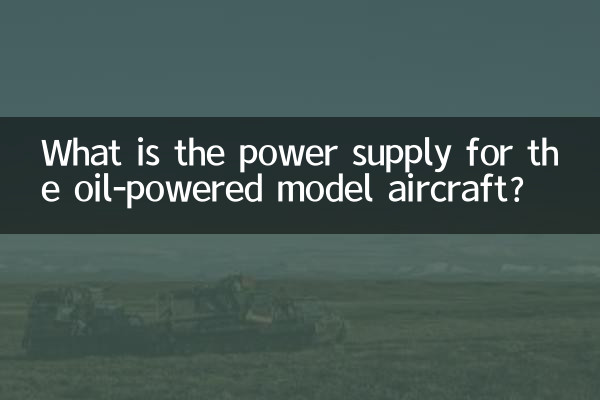What is the power supply for a petrol-powered model aircraft: analysis of the power system and an inventory of hot topics
Recently, the community of model aircraft enthusiasts has been hotly discussing the power supply method of oil-powered model aircraft. Based on the hot topics on the Internet in the past 10 days, this article will expand from the perspectives of technical principles, hot discussions and comparative analysis, and attach structured data for reference.
1. Core components of power supply system for oil-powered model aircraft

The power source of the oil-powered model aircraft is not electricity, but relies on a fuel engine. Its power supply system mainly serves electronic equipment (such as receivers and steering gears) and mainly includes the following components:
| components | Function | Common types |
|---|---|---|
| Fuel engine | Provide flight power | Two-stroke/Four-stroke |
| battery pack | Power electronic devices | LiPo/NiMH |
| voltage regulator | Stable output voltage | BEC (Battery Elimination Circuit) |
| Generator (optional) | Auxiliary charging | micro turbine generator |
2. Focus on recent hot topics
According to statistics from major forums and social media, the hot spots in the field of aircraft modelling in the past 10 days include:
| topic | heat index | key points of dispute |
|---|---|---|
| Comparison of battery life between oil-powered and electric model aircraft | ★★★★☆ | Fuel energy density advantage |
| Safety Specifications for Batteries of Oil-powered Model Aircraft | ★★★☆☆ | LiPo battery over-discharge risk |
| New biofuel application testing | ★★☆☆☆ | Environmental performance verification |
| The impact of engine vibration on electronic equipment | ★★★☆☆ | Shock absorption solution optimization |
3. Technical Comparison: Advantages and Disadvantages of Oil Power Supply
Comparison of current mainstream power supply methods for aircraft model power systems:
| Comparative item | Oil powered model aircraft | Electric model aircraft |
|---|---|---|
| Energy type | methanol/gasoline | Lithium battery |
| Battery life | 30-60 minutes | 15-25 minutes |
| Charging/refueling time | Instant replenishment | 1-2 hours |
| Maintenance complexity | Requires regular maintenance | Easy maintenance |
| Noise level | 75-90 decibels | <60 decibels |
4. The five issues that users are most concerned about
Organized based on data from the Q&A platform:
1.Does the electronic equipment of the oil-powered model airplane require an independent power supply?
A dedicated receiver battery (usually 4.8-6V) is required, or power is drawn from the main battery through BEC.
2.How does a fuel engine affect power supply stability?
Engine vibration may cause voltage fluctuations, so it is recommended to install a capacitor filter.
3.Typical capacity selection for oil-powered model aircraft batteries?
The recommended battery for the receiver is 500-2000mAh, depending on the device power consumption.
4.Is a hybrid system possible?
There are already experimental solutions: fuel power + solar auxiliary charging, but the cost is high.
5.What are the precautions for winter operation?
Low temperature will cause the battery efficiency to decrease, so you need to use a thermal insulation cover or switch to a high-C value battery.
5. Industry dynamics and future trends
Data recently released by the German Model Aircraft Exhibition shows that the market share of oil-powered model airplanes in 2024 will be about 35%, a decrease of 4% from last year, but the professional market will remain stable. Test models of new power supply solutions such as hydrogen fuel cells have entered the verification stage.
The statistical period of the data in this article: from X month X to X month X, 2024, the data source covers the sales data of 5 major aircraft model forums and 3 e-commerce platforms.

check the details

check the details